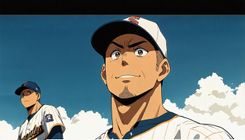Addressing Key Concerns in Major League Baseball

The landscape of Major League Baseball (MLB) is evolving, yet significant concerns continue to plague the league, particularly as the 2025 season unfolds. While the on-field product appears to be in a stable place, especially following years of prolonged games and predictable outcomes, various organizational issues still warrant attention. This analysis delves into five pressing problems that have emerged, with solutions recommended for each. Notably, only two of these issues directly relate to the gameplay itself.
One pressing issue identified is the changing dynamics of the strike zone. A report from Jayson Stark and Ken Rosenthal of The Athletic revealed that umpires have been increasingly stringent in their calls, creating a perception of a smaller strike zone. While the rule governing the strike zone remains constant, the altered approach to its enforcement has resulted in a noticeable increase in both walk rates and balls in play. As MLB experiences a reduction in strikeouts, the inconsistency in calls has led to confusion among hitters and pitchers alike. The proposed resolution is the implementation of the Automated Ball-Strike System (ABS), which has shown promising results during spring training. With a reported 52.2 percent success rate on ball-strike challenges and an average resolution time of 13.8 seconds, the ABS could provide a solution to the inconsistencies plaguing the current strike zone assessment. However, its adoption hinges on approval from the MLB Players Association.
Another notable concern is the frequency of player injuries resulting from collisions at first base. High-profile incidents, such as the collision between Luis Arraez and Mauricio Dubón on April 20, have raised alarm within the league. While safety measures, including oversized bases introduced in 2023, aim to mitigate such occurrences, players continue to face preventable injuries. A practical solution could be the adoption of double-sided first base bags, which are already utilized in slow-pitch softball and college baseball. This design provides separate bases for the defender and the baserunner, reducing the likelihood of collisions. San Diego Padres manager Mike Schildt has voiced support for this approach, suggesting it could enhance player safety without detracting from gameplay.
The collective bargaining agreement between MLB and the Players Association, ratified in 2022, initiated the Prospect Promotion Incentives aimed at encouraging teams to promote top prospects sooner. While this policy has seen some success, exemplified by Julio Rodríguez's impact on the Seattle Mariners' roster and subsequent draft pick acquisition, some teams continue to exercise caution in promoting their best prospects. Instances such as the delayed call-ups of Paul Skenes, Roman Anthony, and Bubba Chandler highlight the ongoing concern over service-time manipulation. To mitigate such practices, the league might consider expanding benefits tied to the Prospect Promotion Incentives, potentially including additional draft-related bonuses for players who rank highly in Rookie of the Year voting.
Examining the competitive landscape, the Colorado Rockies find themselves in a precarious position as they threaten to set a new record for most losses in a season, with a current record of 9-45. Such poor performance raises questions about accountability in team management and the financial implications of excessive losing. While a relegation system similar to that of other leagues may not be feasible, implementing financial penalties for teams accumulating a substantial number of losses could incentivize improved performance. Suggested measures include imposing fines for teams reaching 100 losses, with escalated penalties for repeat offenders, thus encouraging accountability among franchises.
Despite the performance struggles of certain franchises, competitive balance across the league appears stable. However, a growing concern remains regarding the significant payroll disparities among teams. The Los Angeles Dodgers, for instance, possess a luxury-tax payroll exceeding the combined totals of the lowest four teams. While financial resources no guarantee of victory, historical data indicates a correlation between high spending and playoff success. To address this inequity, the league may need to consider structural changes, including a potential salary cap in future negotiations with the Players Association. Solutions proposed include increased revenue sharing and stricter penalties for luxury taxes, fostering a more equitable playing field.









